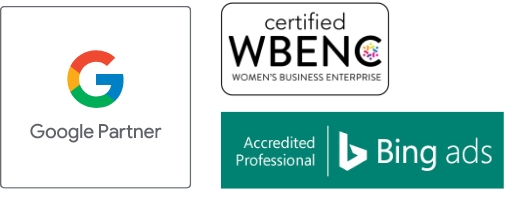
Why Your Financial Website Needs a Content Audit (PART 2)
WELCOME BACK!
In Part 1 of this blog series, we explained what a website content audit is and how it can benefit your financial brand. Now, we’ll share some tips for getting started with your first audit.
THE FOUR DECISIONS YOU’LL MAKE
During your audit, you’ll assess each element of your website according to the metrics and goals you’ve defined. Ultimately, you’ll sort everything into four categories:
- Keep: Do all of your product pages feature current terms, rates, and offers? Are your how-tos comprehensive and easy to read? Are your success stories recent and engaging? Are your latest integrated campaign landing pages converting as hoped? When you determine that content is relevant, up to date, on brand, and performing well, you can leave it alone. You can also consider leveraging that content on other platforms, like social media, print newsletters, or native advertising.
- Improve: Some website content may just need a little freshening up to make it highly valuable. If you have an insightful blog post but the details are a few years out of date, make the needed revisions. If you have a company timeline that doesn’t include a recent milestone, update it and move ahead. If you find content that seems useful but isn’t getting hits, do some keyword research and refresh your content with those keywords to boost its search engine optimization (SEO).
- Consolidate: When it comes to user experience, where can be just as important as what. When new banking products, resources, and offers are added to your website ad hoc, it’s easy to end up with a scattering of pages and modules that aren’t intuitive to navigate. As you evaluate your content, consider what else a user might be looking for during that same online session – then make sure that information is provided or linked to prominently.
- Remove: Even if it was once important, not all content is salvageable. When you find material that’s duplicative, obsolete, or otherwise not adding value, flag it for deletion – and make sure that it’s not linked to elsewhere on your site. This will prevent your visitors from getting misdirected or misinformed and allow your newest and best web content to really shine.
YOUR ACTION PLAN
Here are a few tips to keep in mind as you prepare for your audit:
- Set Your Intentions: Clearly define your scope and goals, and determine what success looks like.
- Pick the Low-Hanging Fruit: Need content? Extract valuable info from hard-to-search PDFs and social posts.
- Think Mobile: Half of all web visits are on smartphones. Be sure your website is mobile-friendly with design that adapts to different screen sizes.
- Make It Snappy: Use Google’s PageSpeed Insights to identify page elements that increase load times.
- Structure Your Content: Use logical headlines and subheads to aid both bots and human users.
- Boost Internal Linking: Make sure that your content points to related information across your site.
- Streamline Everything: Lots of steps? Good for Fitbit, bad for fintech. Simplify how users get more information, open accounts, make payments, or otherwise interact with your brand through your website.
- Refresh Your CTAs: If your marketing funnel is flowing listlessly, try updating some buttons and banners.
- Alert the Crawlers: Use Google Search Console to submit recently updated pages to Google’s index.
- Carry Your Insights Forward: Lessons learned during a website content audit can inform strategy across your organization.
A SPECIAL NOTE ABOUT ACCESSIBILITY
It’s vital to ensure that your brand message and educational content can reach your entire audience – including people with disabilities and device limitations. The Web Content Accessibility Guidelines (WCAG) 2.1 are the latest industry standards for making websites welcoming to all. Consider adding the WCAG checklist to your action plan.
Need a hand with this? Since 2008, LIGHTSTREAM has specialized in empowering community banks and credit unions to optimize their content marketing strategies and bring their websites into compliance with WCAG standards. Find out how we can help you take your financial brand further.
